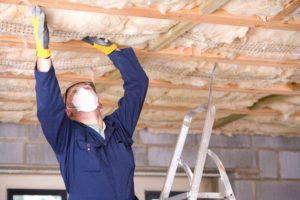Behold the brave home seller.
It takes tremendous courage to list your home on the market. While you may expect to get top dollar for your hardwood floors, granite countertops, and crown molding, you probably don’t expect your home to be “reprimanded” by the real estate community for bad health and safety violations.
What’s a home seller to do when their house is in poor condition? What tips and strategies exist to help sellers market a substandard home? The good news is that you are not alone.
This article will explore five tips and strategies for selling a house in poor condition.
1. Assess and Prioritize Repairs
Before you put your house on the market, it’s important to closely examine how it’s doing. Walk through the property with a critical eye, making note of any problems with the structure, safety risks, and flaws in the way it looks.
It’s important to tell the difference between fixes necessary for safety and living and those just for looks. Fixing structural problems like roof leaks, foundation problems, plumbing problems, and electrical dangers should be your top priority. Not only do these things affect the property’s value, but they also affect how possible buyers see the house as a whole.
2. Set a Realistic Price
Pricing your house appropriately is one of the most critical aspects of selling a house as is. Research the local real estate market to understand the prices of comparable properties in similar conditions.
Consult with experienced real estate agents who can provide insights into market trends and buyer expectations, including those seeking a “sell my house cash offer.” When setting a price, consider the estimated repair costs and deduct them from the property’s value.
3. Full Disclosure
Honesty is the best policy when selling a house in poor condition. Be transparent about the property’s issues, and provide detailed information about necessary repairs and maintenance. This transparency builds trust with potential buyers and avoids legal complications that could arise from nondisclosure.
You might consider conducting a professional inspection and sharing the report with potential buyers. Highlight your efforts to address any issues and provide a timeline for any repairs you plan to complete before the sale.
4. Consider Cosmetic Improvements
While major repairs take precedence, some minor cosmetic improvements can significantly impact a buyer’s perception of the property. A fresh coat of paint in neutral colors can make the interior feel cleaner and more inviting.
Enhance curb appeal by tidying up the landscaping, trimming bushes, and planting colorful flowers. These relatively inexpensive improvements can create a more favorable first impression.
5. Highlight Potential
Even in poor condition, your house likely has unique selling points. Whether it’s a historic charm, a spacious backyard, or proximity to desirable amenities, emphasize these strengths in your listing.
Use descriptive language to help potential buyers envision the possibilities the property holds. Professional photography and virtual staging can help showcase these positive aspects and help buyers see past the current state of disrepair.
Selling a House in Poor Condition Fast
When selling a house in poor condition, these five tips and strategies can help get you the best possible price. Investigate potential zoning laws and consider selling to a cash buyer.
Additionally, make necessary repairs, take care of curb appeal, and be honest about issues with the property. Put these tips into action to get the best price for your house!
We hope you found this article helpful. If you did, be sure to check out our blog for more valuable information.





Be First to Comment